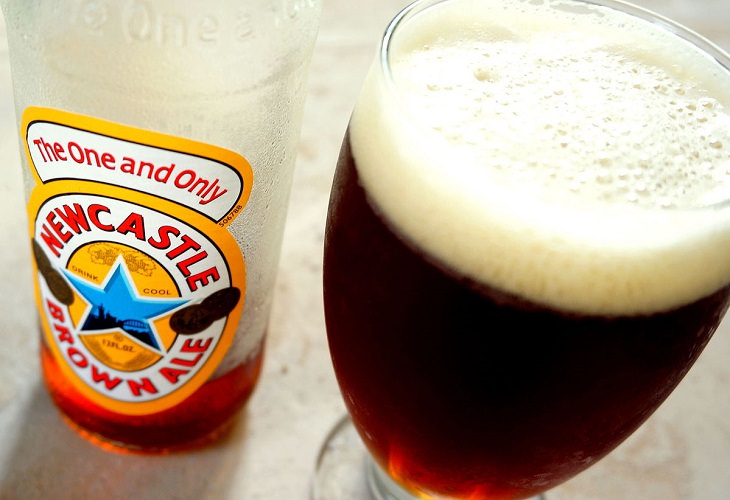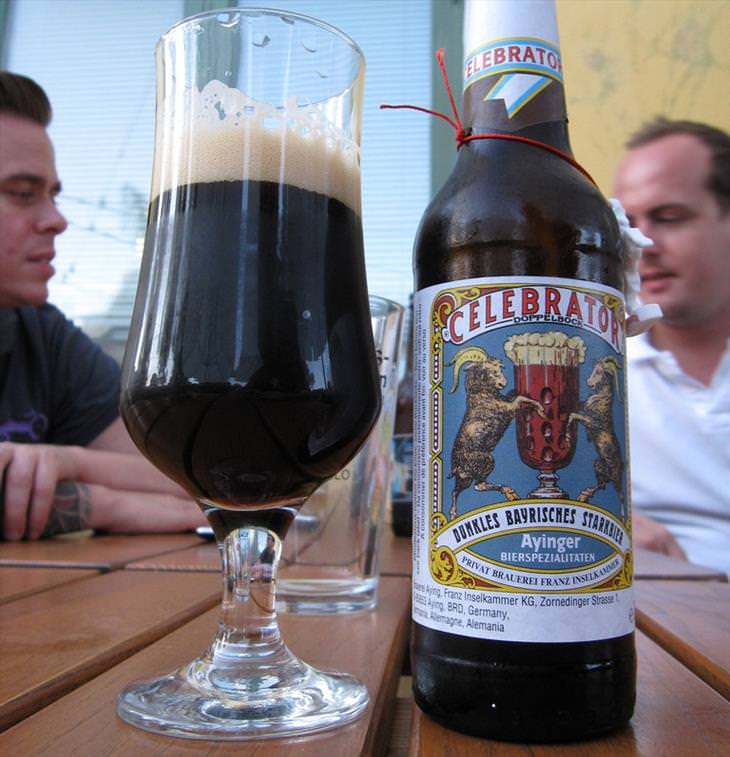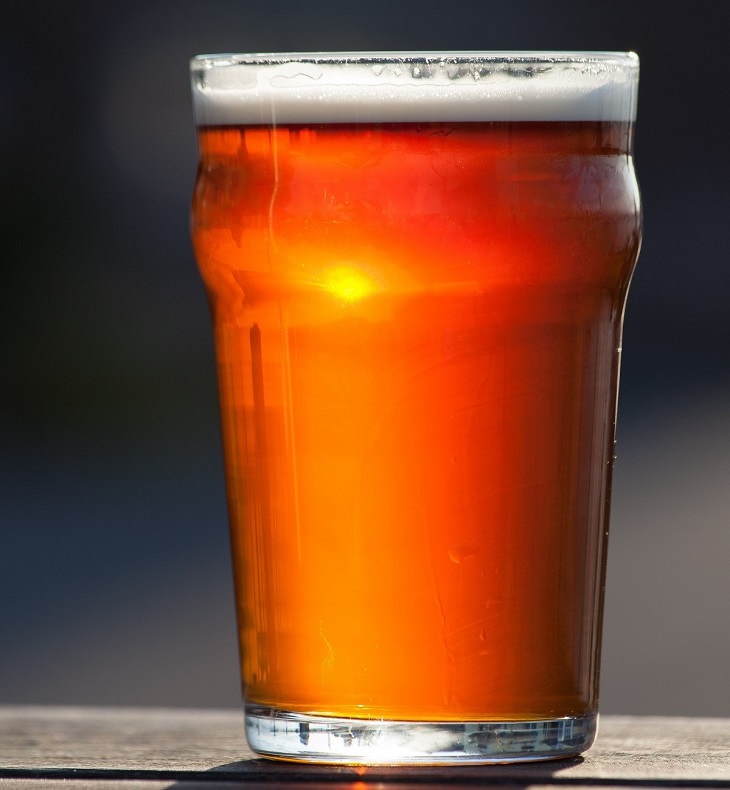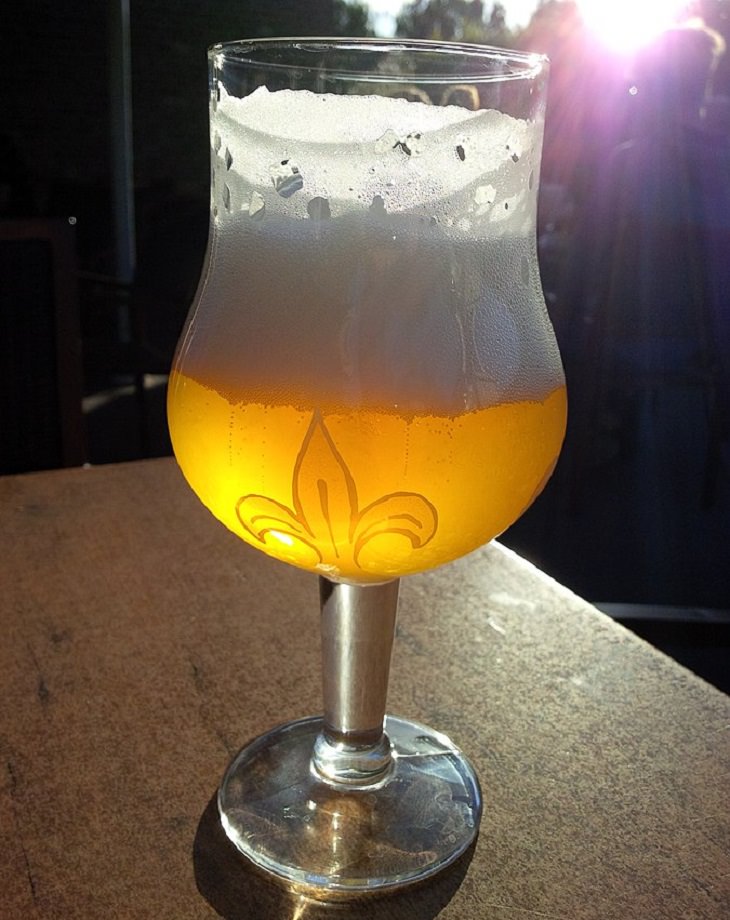Bitter/IPA (UK)
Bitters are an especially well-hopped variant of pale ale (ale produced from pale malt), with the high volume of hops lending the ale a particularly bitter taste. India pale ale (or IPA) which gained great popularity during colonial times and are now enjoying a large resurgence in popularity (particularly in America), is a particularly strong and bitter pale ale. Bitters are often clear, and have a golden color, ranging from a light yellow to a deep red.
Goes best with: lightly spicy food, particularly Indian, Mexican and Thai.
Stout (Ireland)
Derived from the English porter beer, stouts (of which Guinness is the most famous) have become a staple of Irish brewing. Modern-day stouts are the deep dark brown of coffee, nearly black, with a heavy consistency and a particularly creamy foam. The taste is rather bitter, but also smooth. What gives the stout its characteristic flavor and coloration is burnt malt.
Goes best with: The creamy consistency of the stout goes splendidly with oysters, or a sweet dessert like vanilla ice cream or chocolate pudding, which offset its bitterness.
Pilsner (Czechia)
Named after the Czech town of Pilsen, pilsners are a subtype of pale lagers that are noteworthy for their clear, pale blond color and light hoppy flavor with a relatively large amount of foam.
One of the most popular pilsners in Europe comes from a town in Czechia called Budejovice, or in German- Budweis. If the name rings a bell, that is not a coincidence. German-American beer entrepreneur Adolphus Busch liked the pilsner style so much that he decided to bring it to America. Consequently, the Czech brewery and Anheuser-Busch, the world’s largest brewing company, have been enmeshed in legal battles for over a hundred years over the right to call a beer Budweiser. Nowadays, the American beer is sold as Bud in the EU, and Budweiser is used for the original Czech pilsner.
Goes best with: Appetizers. The lightness of pilsner makes it ideal to start the dinner with.
Trappist/Abbey Beer (Belgium)
Trappist beers are the crown jewel of Belgian brewing, so much so that the International Trappist Association had to take legal measures to ensure only beers brands actually produced in a Trappist monastery will be able to refer to themselves as “Trappist”.
Nowadays, any beer brewed in the style of these beers but not actually by Trappist monks is called an abbey beer (abdijbier). What makes Belgian abbey beers special, beyond the tendency to drink them out of stemmed goblets, is the complex fruity and spicy flavor and the deceptively high volume of alcohol.
Goes best with: Depends on the strength, but my favorite pairing is a rack of marinated ribs.
Weizenbier/Weißbier (Bavaria, Germany)
The most popular beer in the southern region of Bavaria, “Weizenbier” literally means wheat beer. It is made using a high proportion of wheat to barley, has a cloudy, amber color and lightly sweet flavor (though not as obviously sweet as some of the Belgian abbey beers) and very little hoppy bitterness, compared to most beers. The most famous Bavarian brewer of wheat beer, Weihenstephan, also has a legitimate claim to being the world’s oldest continuously-running brewery, as it was licensed as early as 1040 CE.
Goes best with: A platter of traditional sausages with sides of mustard, sauerkraut and creamy mashed potatoes.
Bière de Garde

Literally “beer for keeping”, this is an old-fashioned type of strong pale ale that underwent warm fermentation and aging, resulting in a heady ale with a particularly high alcoholic content, cellared aroma and chocolatey flavor.
Goes best with: a hearty meat dish, like roast beef or a pot of boeuf bourguignon.
Brown Ale
 Source: Aneil Lutchman
Source: Aneil Lutchman
Particularly popular in the northeast of England, brown ales have a distinct chocolatey, caramelized, nutty flavor that is typically less bitter than pale ales and porters and only slightly sweet, with a full body, creamy foam and a relatively low alcohol volume.
Goes best with: The nutty flavor of brown ale really complements the nuttier hard cheeses like Gouda.
Bock

Source: Bernt Rostad
This is a rather potent lager with a high alcoholic volume, very little hoppy bitterness, a toasty flavor with a tinge of sweetness and a clear deep red body. As many of the beers in Germany, it is mainly produced in Bavaria, though Bocks originally come from further north in Saxony. Doppelbock is a darker and even stronger variant, with a somewhat alcoholic aroma.
Goes best with: Roast pork (Schweinebraten mit Knödel)




 Source: Bokske
Source: Bokske

 Source: Aneil Lutchman
Source: Aneil Lutchman